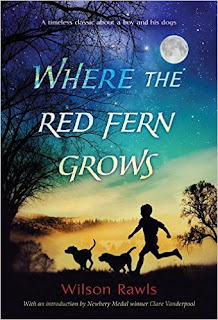Today, I'm linking up with other blogger friends to host the review of Goal 9 from The Reading Strategies Book by Jennifer Serravallo!
You can find my other reviews of goals below:
Goal 8 - HERE
Goal 7 - HERE
Goal 6 - HERE
Goal 5 - HERE
To see with the introduction and the first 4 chapters (which I missed) click {HERE}.
Let's get into this week's goal: Determining Key Details
Why is this goal important?
Jennifer explains that there is a difference between identify details and being able to identify the key details. It's important to not only know what the text is about, but to be able to read through a text and identify the facts that "align with the main idea."
I like the analogy she uses to explain the need for students to know the key details of a text: she says determining key details is using a highlighter in text to only highlight the facts to go with your main purpose for reading vs. highlighting everything in the text.
In early grades (K-1) almost all the information is related to the main idea, but Jennifer says "that as the text get complex, the density of information increases" and "the task of supporting an idea with related details becomes more challenging." By 4th and 5th grade level text, there can be multiple ideas presented within a page of text.
How to tell if your students need to practice this skill:
- support a topic with little detail
- when their support for a main idea is based on one paragraph or just the photo in the text.
- give you a list of random information that may fit the topic but may not
- they can state the main idea but are not able to support if with specific information without prompting
- need support/help in knowing which details are the most important
There are so many strategies that are in this book for each goal, that I'm only sharing 3 each week. Here are the ones I chose to share:
9.3 "A Spin on KWL"
Who is it for: Levels A-Z+
What Genre/Text: nonfiction
Skills Used: activating prior knowledge
This strategy gets students to think before reading about what they are sure they know, what they think they know and what they wonder about the topic. So...
Instead of this K-W-L
 |
| Source |
Use This K-W-L:
You can get this new K-W-L {HERE}!
NOTE: Jennifer does not say that the student has to fill out a written KWL - it can certainly be done orally! The focus should be to get students to think about the 3 parts prior to reading.
Let's take a look at the next strategy I chose to share with you this week:
9.4 "Check Yourself"
Who is it for: Levels A-Z+
What Genre/Text: nonfiction
Skills Used: monitoring for meaning
The Check Yourself strategy is used when you're reading and you realize that something is confusing and not making sense. We need to teach students to stop, reread, and think about what is confusing and why.
Jennifer says to prompt the student to think: Did I misread a fact? Is it different than what I thought I knew?
Reread - based on what you read, what are you thinking about what you knew before or based on what you read are you thinking you misread it the first time?
The book shares a poster that is circular in nature called "Check Yourself"
It is a visual of the steps in this strategy:
READ - Notice Confusion - Reread - Revise Your Thinking - and back to Read.
Moving onto the final strategy this week:
9.19 "Event Connections"
Who is it for: Levels P-Z+
What Genre/Text: narrative nonfiction
Skills Used: understanding cause and effect, sequencing, summarizing
This strategy is for historical narratives that often contain lots of details and information that are usually hard to keep track of.
The author suggests keeping track of these events by jotting them on paper in a timeline fashion with a few key words. This will create a flow-chart of events that will remind students of the important events in the book and their relationships.
Jennifer also suggests that students may need to have help with using the strategies for goal 5 which was understanding plot and setting. She states that some of those strategies even though fiction in nature could be adapted to the narrative fiction to assist students in understanding flashbacks or foreshadowing that may occur in these texts.
 |
| Source |
 |
| Source |
Jennifer also suggests that students may need to have help with using the strategies for goal 5 which was understanding plot and setting. She states that some of those strategies even though fiction in nature could be adapted to the narrative fiction to assist students in understanding flashbacks or foreshadowing that may occur in these texts.
Well - that covers the 3 strategies that I'm focusing on today! Make sure you check out what other bloggers are choosing as strategies to focus on for this week....click {HERE} to see!
Join us in reading this book! Get your own copy HERE.
I really would like to hear your thoughts on this goal or on the whole book series so far....just leave a comment below!







No comments:
Post a Comment